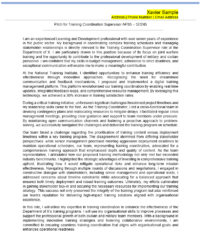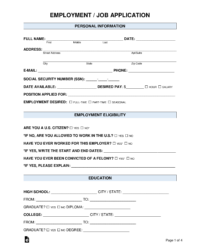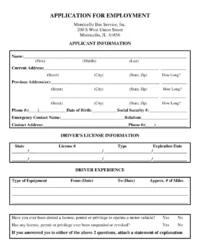Utilizing a concise format offers several advantages. It saves applicants time and effort by focusing on crucial data, reducing the likelihood of information overload. For employers, it streamlines candidate evaluation, allowing for rapid identification of qualified individuals. This efficiency can significantly shorten the hiring cycle, benefiting both applicants and organizations. Additionally, a standardized structure improves data organization and accessibility for subsequent analysis and reporting.
The following sections will explore best practices for creating and using these streamlined forms, including recommended fields, formatting considerations, and strategies for optimizing their effectiveness in diverse recruitment scenarios.
Key Components of a Streamlined Application Form
Effective candidate screening relies on access to essential applicant information. A well-designed, concise application form facilitates this process. The following components are typically considered crucial:
1. Contact Information: This section should include full name, phone number, email address, and mailing address. Accurate contact details are essential for communication throughout the hiring process.
2. Summary/Objective (Optional): A brief professional summary or objective statement can provide a quick overview of the applicant’s skills and career goals. This is particularly useful for experienced professionals or those transitioning careers.
3. Work History: Previous employment details are vital. This should include company names, dates of employment, job titles, and a concise description of responsibilities for each role.
4. Education: Academic qualifications, including degrees, diplomas, certifications, and the institutions attended, should be clearly listed. Relevant coursework or specializations can also be included.
5. Skills: This section allows applicants to highlight key skills relevant to the position. This may include technical proficiencies, software knowledge, language skills, or other specialized abilities.
6. References (Optional): While detailed reference information might be requested later, including a statement indicating references are available upon request can be helpful.
A streamlined form benefits both applicants and employers. It ensures efficient collection of crucial data, enabling faster processing and informed decision-making. Careful selection of included fields maximizes effectiveness and minimizes applicant burden.
How to Create a Streamlined Application Form
Creating an effective, concise application form requires careful consideration of essential elements and efficient organization. The following steps outline the process:
1. Define Essential Information: Begin by identifying the crucial data points required for initial candidate screening. Focus on information directly relevant to the position and avoid unnecessary fields.
2. Choose a Format: Select an accessible format, such as a web form, word document, or PDF. Ensure compatibility across different devices and platforms.
3. Structure Logically: Organize sections clearly and logically, using headings and subheadings to guide applicants through the form. Group related information together for improved readability.
4. Craft Clear Instructions: Provide concise, unambiguous instructions for each section. Explain required formats and any specific details needed.
5. Keep it Concise: Minimize the number of fields and the length of required responses. Focus on essential information to reduce applicant burden and improve completion rates.
6. Test and Refine: Before implementing the form, thoroughly test it to ensure functionality and usability. Gather feedback and refine the design based on testing results.
7. Ensure Accessibility: Design the form with accessibility in mind. Use clear fonts, appropriate color contrast, and consider alternative formats for users with disabilities.
8. Regularly Review: Periodically review and update the form to ensure it remains relevant to current hiring needs and best practices. Adapt to evolving legal requirements and industry standards.
A well-designed application form facilitates efficient candidate screening, improves data organization, and enhances the overall hiring process. Attention to detail and a focus on essential information are key to creating an effective and user-friendly experience for both applicants and recruiters.
Streamlined application forms, focusing on essential personal and professional details, offer significant advantages in modern recruitment. They enable efficient candidate screening, improve data management, and contribute to a positive applicant experience. By prioritizing key information, organizations can streamline their hiring processes while ensuring they collect the necessary data to make informed decisions. Careful design and implementation, considering accessibility and best practices, are crucial for maximizing effectiveness.
Leveraging optimized application forms represents a strategic approach to talent acquisition. As the employment landscape evolves, the ability to efficiently process and analyze applicant information becomes increasingly critical. Organizations that embrace streamlined processes, prioritizing relevant data and user-friendly design, will be better positioned to attract and secure top talent in a competitive market. This focus on efficiency and effectiveness ultimately benefits both job seekers and employers, fostering a more streamlined and successful hiring experience for all stakeholders.


